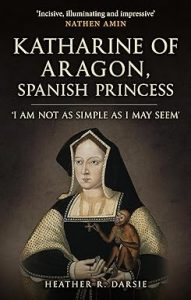Sisters Who Would Be Queen
Leicester Mercury
1st February 2009
‘Lady Jane Grey, the 16-year-old who was Queen of England for just nine days before being beheaded, is part of the fabric of Leicestershire’s history, and her home, Bradgate Park, where she grew up, is the most visited of the county’s tourist attractions.
Jane is often portrayed as the tragically young victim of her parents’ ambition and political manoeuvring, but a new book by the local writer and historian, Leanda de Lisle (The Sisters Who Would Be Queen, Harper Collins, £25), shows Jane is a very different light, and also tells the stories of her sisters, Katherine and Mary, both of whom played important roles in Tudor history.
Leanda comments: “I thought Jane’s story would be straightforward, but I found she had been fictionalised by the history books. She was a more complex and interesting character, a recognisable adolescent with strong personal beliefs. She knew and understood what a weapon propaganda could be. If she were alive today, she would be described as ‘media savvy!”
“She was more of a Protestant Joan of Arc than a victim of the ambition of her relatives. She had not wanted to be queen, but when she did become the monarch, she was determined to rule as well as reign, and even called her soldiers up into battle against MaryTudor, while her generals were abandoning her as a lost cause.”
For Leanda, Frances Grey, Jane’s mother, is one of the most interesting people in her book. Highly educated and a devoted wife and mother, she was also a first cousin of Mary Tudor, a loyal Protestant who became a Catholic under the Catholic queen. After Jane’s death, Bradgate was confiscated, but it was Mary Tudor who gave Beaumanor, which had also belonged to the Grey family, back to Frances.
“Frances Grey was re-invented in the 18th century. She had re-married after her husband, Henry Grey, Duke of Suffolk, was executed in 1554. Adrian Stokes, her second husband, was a well educated employee of the family, and was two years younger than she was.
“There is an 18th century portrait of Lady Dacre and her son, which is shown in the book. Lady Dacre resembles a toad-like Henry VIII. This portrait was represented as one of Frances Grey with Adrian Stokes, with the intention of denigrating her and giving the impression that she was powerful, ambitious and sexual and had married a servant and a toy boy – the antithesis of what 18th century writers wanted us to believe, ie that exemplified by Jane, a good woman was sweet, gentle and obedient. Thus Frances has been traduced for 300 years,” Leanda de Lisle points out.
One of Jane’s last letters was to her sister Katherine, who was then 13 but had already been married and divorced, urging her to make a stand against Mary Tudor and be a martyr to the Protestant cause. Both Katherine and Mary survived Mary Tudor’s reign, and, as heirs of Elizabeth I, they were expected to be prominent at her Court. They were dismayed to find that the queen hated and feared them.
Elizabeth herself felt unable to marry. Hatred for her lover, Robert Dudley, was widespread and she was afraid to marry a foreigner. She was worried that, if Katherine married and had a son, he would replace her.
Katherine defied Elizabeth and married in secret, and when the queen discovered this, she had Katherine imprisoned in the Tower, where she gave birth to a son. She and her husband were very much in love, but were never allowed to live together, although after he visited her in the Tower she became pregnant again and produced a second son. She died in 1568 under house arrest, probably having starved herself to death.
Mary Grey, the youngest Grey sister, was an intellectual and a tremendous character although she was plain and short, almost a dwarf. She married Thomas Keyes, a widower twice her age who was the Court Sergeant Porter, and the biggest man there, who later risked his life to be with her.
The couple believed that their marriage would not be seen by Elizabeth as a threat, but it made the queen so angry she ordered the couple to be placed in separate prisons. She wanted Mary Queen of Scots as her heir, and also wanted to demonstrate her power to people who had been associated with the Greys.
Mary remained in exile after Thomas Keyes’ death, but was freed in 1572. She even returned to Court, and one of the things Leanda discovered in her research for her book is that Mary is buried in her mother’s tomb in Westminster Abbey.
She says: “Mary is my favourite sister, as she combined the best qualities of Jane and Katherine. At a time when ugliness was regarded as a sin, and good looks were very important, she overcame her lack of them by sheer force of personality. She was a survivor too, and died in 1578, probably of the plague.”
This account of the lives of the Grey sisters has drama a-plenty and contains a great deal of new material both about the Grey family and the Tudor Court of Elizabeth I. I asked its author whether it is a subject she is likely to return to?
“I may do, but possibly in the form of a novel, as there are lots of stories there. As a historian, you interpret facts, and you have to have the knowledge to do so. You must also question what you are told, as I questioned the received wisdom about Frances Grey. A novelist has more freedom, and now that my three boys have all left school, I think it may be time to turn another page in my life. So I may do something different, but I shall remain first and foremost a writer.”
Copyright 2009 Leicester Mercury.





































